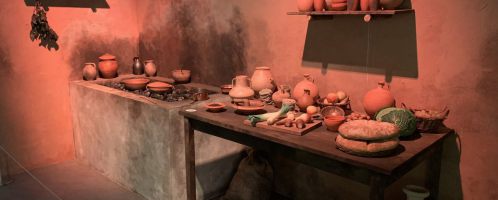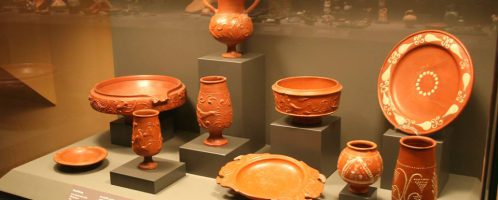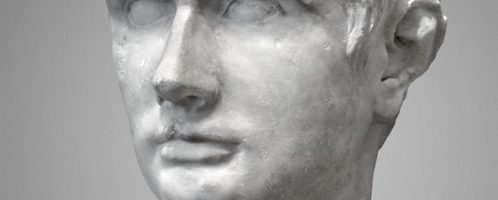If you have found a spelling error, please, notify us by selecting that text and pressing Ctrl+Enter.
Curiosities of ancient Rome
The world of ancient Romans abounded in a number of amazing curiosities and information. The source of knowledge about the life of the Romans are mainly works left to us by ancient writers or discoveries. The Romans left behind a lot of strange information and facts that are sometimes hard to believe.
Bust of Gaius Julius, grandson of Augustus
Roman bust of Gaius Julius, grandson and adopted son of Augustus and heir to the throne. The object is dated from 1-4 CE.
Carnelian showing artist at work
Magnificent Roman carnelian with the artist’s image while painting a woman’s bust. The object is dated to the 1st-3rd century CE and is only 1.2 cm long.
Reconstruction of kitchen in Roman bar
Interesting reconstruction of the kitchen in a Roman street bar (coupona or thermopolium), located in the Lugdunum museum in the French city of Lyon.
Infanticide in ancient Rome was accepted
In ancient Rome, infanticide was a common practice. A child’s first days in the world have always been uncertain; in antiquity, many children did not survive even a few days due to heavy childbirth, diseases and poor health. Hence, they waited to give a name to the child. At times, the child may have been deliberately rejected by the parents.
Provinces over the years
One of the compelling reasons for Roman supremacy in antiquity was the large-scale conquest and provinces of new lands. The concept of a province is derived from the Latin provincia, i.e. the responsibilities of the governor in charge of the new territory.
Was Marcus Junius Brutus “a man of honor”?
Marcus Junius Brutus is best known for being one of the killers of Julius Caesar. In the historical tradition, he is considered a defender of the Roman republic and republican values. It turns out, however, that he treated these values freely and selectively, depending on whether they actually served his interests.











